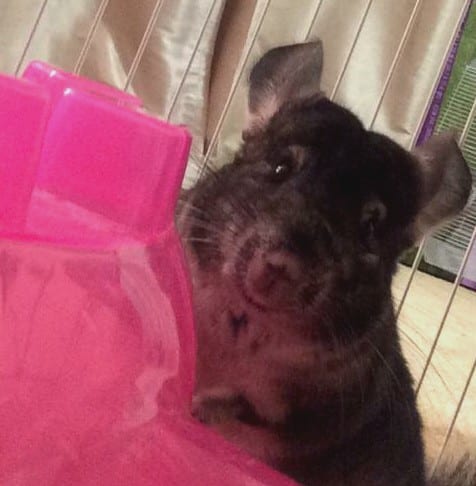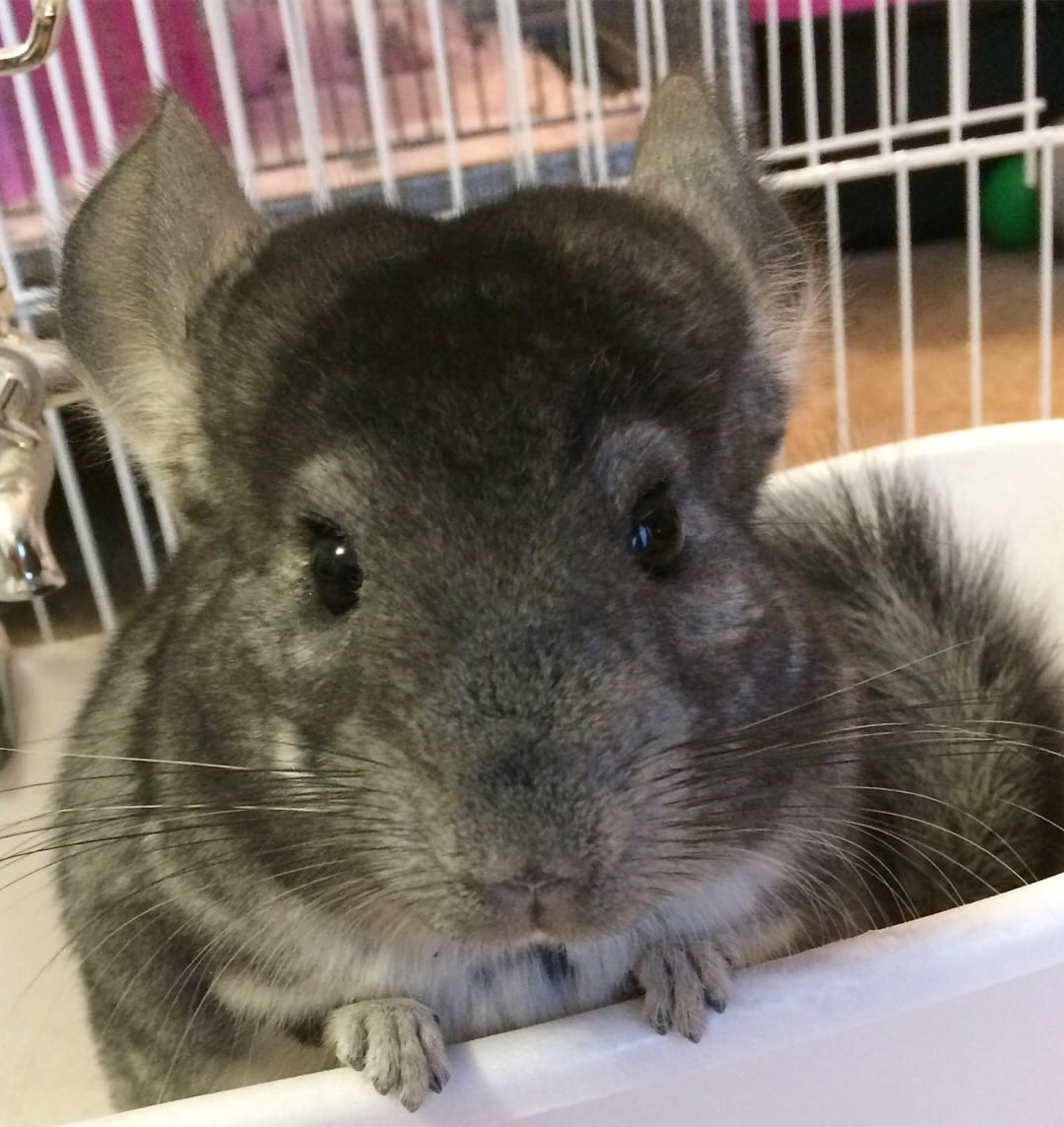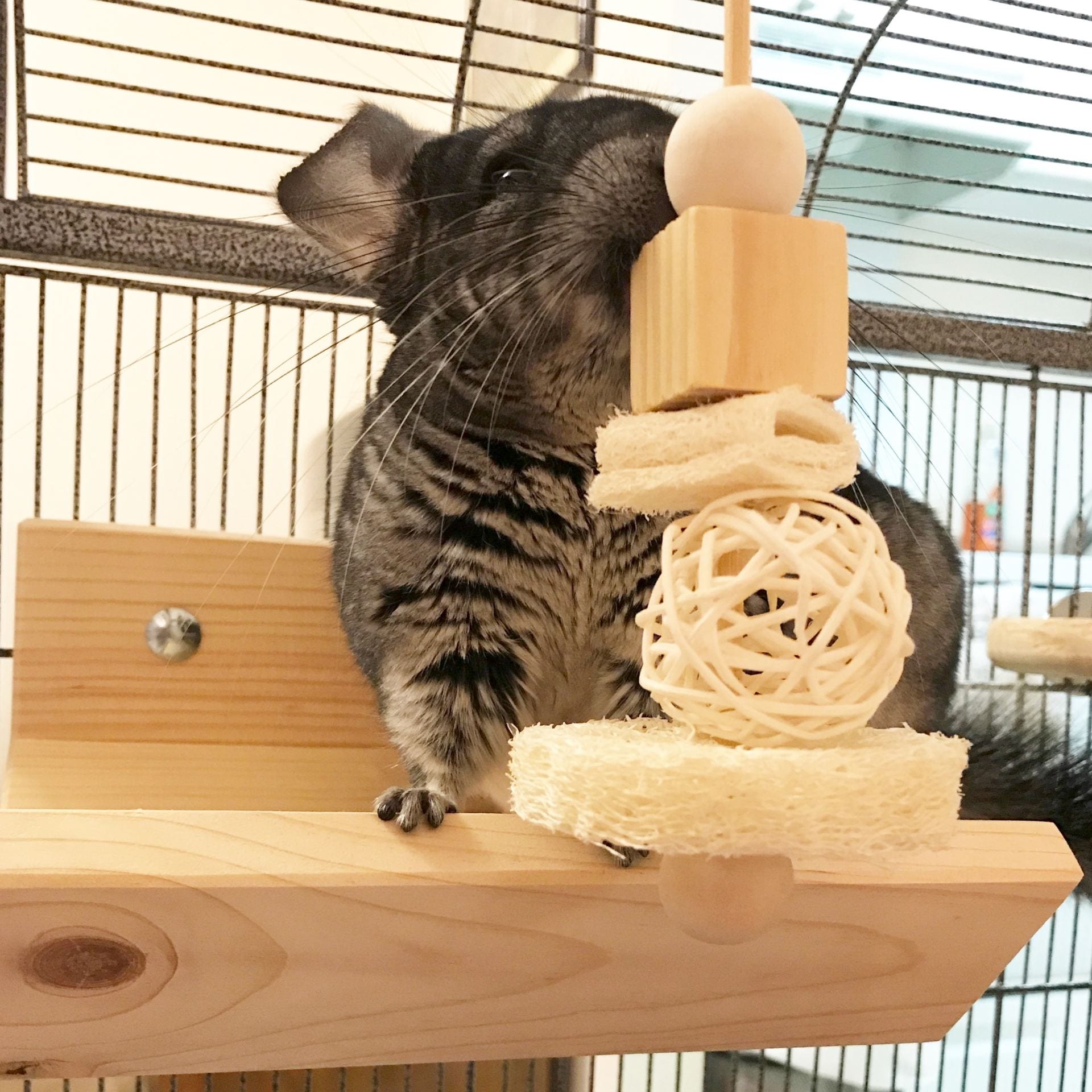The Material World of Pets: Chinchillas & Craftsmanship
By Alexandra Rosenberg, WPAMC Class of 2019
Throughout my time at Winterthur, we have primarily discussed the material culture of humans. However, during our Northern Trip this past summer, a painting of a child with a squirrel wearing a collar prompted me to think about the material culture of pets – and the material culture of my pet, in particular.
On March 3 of last year, I made the life-changing decision to adopt a chinchilla. After purchasing her a multi-level cage, a house to hide in, a wheel to play in, lots of chew toys, bedding, and food, I brought my chinchilla (who I named Penelope) up to Delaware to keep me company as I finished the Winterthur Program.
I quickly realized that many of the products that pet stores market as being safe for chinchillas are not at all suitable for the adorable fluffy critters. I initially noticed that the wheels sold at pet stores are too small for a growing chinchilla, as they would break whenever Penelope would run on it for extended periods of time. Next, I realized that having any plastic or paper bedding in the cage with Penelope meant that she would chew it to bits. Now, if she did not swallow the plastic or paper, there would be no problem with having objects made out of these materials in her cage. However, she did swallow them. Chinchillas cannot digest plastic or paper, and consuming any may lead to blockages in the digestive tract. Luckily, I removed these dangerous objects from Penelope’s cage before any damage could be done. However, that left me with the issue of finding suitable products for Penelope that she would actually enjoy playing on and with. If I could not find them in a pet store, where could I find them?

Penelope the chinchilla poses for a picture with her plastic igloo before it was replaced with a safer, wooden house to hide and sleep in.
I turned to the internet in my search of suitable products for Penelope. I found that there are several craftspeople working in the American Midwest and Northwest who specialize in making safe products for chinchillas and other small animals. It was fascinating to think about how the animals people keep as pets can drive niche craft markets, as at Winterthur we typically think of a blacksmith or carpenter as making products for humans, but here were entire businesses devoted to metal and wood-working for chinchillas! Most of the products are made using a combination of wood and metal, which are then treated with animal-safe paints and finishes to add a pop of color to chinchillas’ cages and playpens. I ordered Penelope a wheel and house to hide in that are made of chinchilla-safe wood and metal, wooden ledges, tunnels, lofts, and even a toilet and bathtub!

After acquiring some of the specialty products like the wheel, toilet and house to hide in, Penelope’s cage is ready and safe for her to play in!
When I think about how many portraits from past centuries contain animals and/or pets of some sort, I wonder at the material world of these pets. Did owner commission craftsmen & women to make specialty products for their pets, or is that a new phenomenon? If new, when did the niche market of specialty pet products come about? In asking these questions I wish to consider not only considering the material world of dogs and cats, as they are the most common pets, but the material world of exotic pets such as chinchillas, reptiles, amphibians, and birds in the history of craftmanship in the United States. We cannot and should not leave our furry or scaly friends out of the historical narrative!
If you would like to learn more about the material world of chinchillas, or keep up-to-date on Penelope’s daily adventures, you can follow her on Instagram by searching @penelopethechinchilla.



I enjoyed reading your article. I,too, own a chinchilla and have a hard time finding quailty, safe items for her. Thanks for sharing.
I have had the same problems. A lot of store sold food is not safe for chinchillas and it took me quite a while to find a large wheel for him. I look online frequently to find new items but it can be difficult. Lynn
Penelope needs a friend. Chins dont like to be alone
I have the same issues and been trying to figure out how to eliminate the dangers with safe products. How can I get what you have?
[…] Include appropriate accessories in the cage, such as food and water containers, safe chew toys, hideouts, and nesting boxes. These items provide enrichment and […]